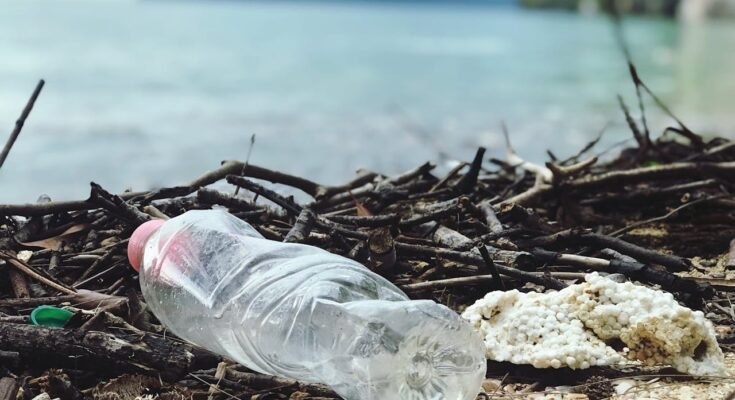Plastic pollution is now widely recognized to pose a serious environmental threat to the oceans and other aquatic ecosystems, putting marine life and biodiversity at risk. Millions of tonnes of plastics enter oceans each year, polluting habitats, jeopardizing marine life, and potentially contaminating the food chain of human beings. A scientific understanding of the problem is necessary to protect future generations.
Background of the Problem
The world is beset with plastic pollution, one that is omnipresent in modern life. Its persistence and slow devolution rate have made it a global pollutant, according to the United Nations. 8 million tons of plastic enter the oceans every year, from large debris such as bottles or fishing nets to microplastics-small pieces of plastic that measure up to 5mm in diameter.
Marine ecosystems account for 70% of Earth’s surface and are unevenly disadvantaged because of plastic pollution; plastic pollution penetrates every niche within the marine environment from surface waters down to the deepest ocean trenches.
Toxic Effects
Plastic pollution poses significant dangers to ocean creatures for the most part bypassing discarded fishing nets and lines, locks, ropes, and plastic loops that injure, suffocate, or kill.
Animals like turtles, seals, and seabirds involve themselves in this process.
Moreover, so many marine animals erroneously eat plastic while it is regurgitated as they take it as food.
For one, sea turtles mistake floating plastic bags for jellyfish, while species like albatross ingest little bits of plastic that block their digestive systems, thus starving them afterwards.
Fish also eat microplastics, which may enter the food chain to be consumed by humans eventually.
The toxicity of BPA plastics certainly raises some red flags.
Destruction of Habitat
Plastic pollution chokes the corals and seabed habitats. Coral reefs, being the vital ones of marine biodiversity, happen to be the most vulnerable. With the pollution, the diseases in corals spread more easily, aggravating the degeneration of these ecosystems.
Ecosystems are not the only factor affected. Other repercussions are related to human populations:
- Health risks: Microplastics consumed by fish and shellfish could enter our food and potentially cause lifetime damage.
- Financial impact: Coastal communities based on fishing and tourism face financial setbacks whenever marine biodiversity is in danger together with pollution affecting shorelines.
Despite being a Herculean challenge, just taking up the issue of plastic waste is antiquated. Everyone can help avoid disposable items, such as plastic bags and plastic utensils. Instead, opt for the reusable alternatives of bamboo and stainless steel containers and cloth bags. Knowing what the local recycling rules are and working to conform to them is vital for the disposal of plastic items done rightly. Another means of raising the hand would be to support organizations that are attempting to improve recycling systems. Murphy also does a solid job of organizing community cleanup, where such groups as Ocean Cleanup and the Ocean Conservancy vacuum up our shores.
Advocate for Policy Changes
Advocate for the elimination of single-use plastics by creating awareness on sustainable alternatives. Make demands for optimum waste management across the globe.
Spread Awareness
Inform the audience on the effect of plastic pollution onto marine life and encourage their actions. Promoting awareness-based storytelling, documentaries, or some other kind of features.
Choose Sustainable Products
Support brands and companies that are committed to reducing plastic packaging and using environmentally friendly packaging.
Avoid products containing microbeads, such as certain exfoliating scrubs and toothpaste.
A global response to plastic pollution
Governments, NGOs, and corporations have begun to take more action against plastic pollution:
- Global Agreements: Initiatives like the Global Plastics Action Partnership are committed to reducing plastic waste globally.
- Innovative Solutions: Some companies are creating biodegradable plastics, Seabin and Ocean Cleanup are some of the projects being developed to remove current waste from oceans.
Conclusion
To a complex but solvable matter of concern, plastic pollution, we are in a position to lessen its killing endeavor by understanding what plastic pollution does to marine life and actively committing ourselves to the cause of reducing plastic waste on the oceans.
The choices you make matter. Saying no to a plastic straw or taking part in a cleanup initiative takes humanity closer to cleaner oceans and a sustainable planet. So together, we can save marine life and provide a sustainable home for generations to come.



